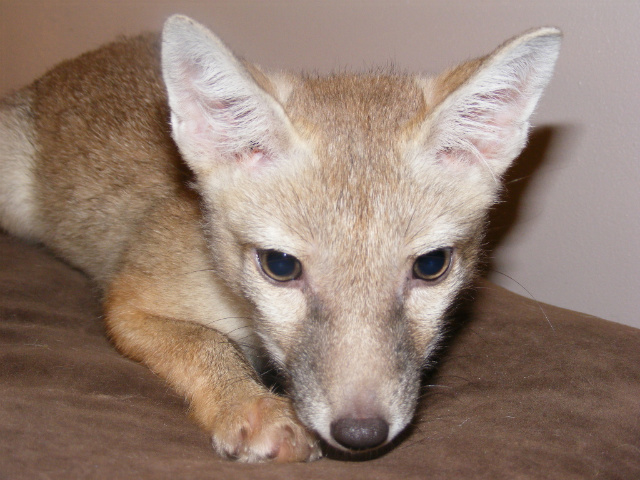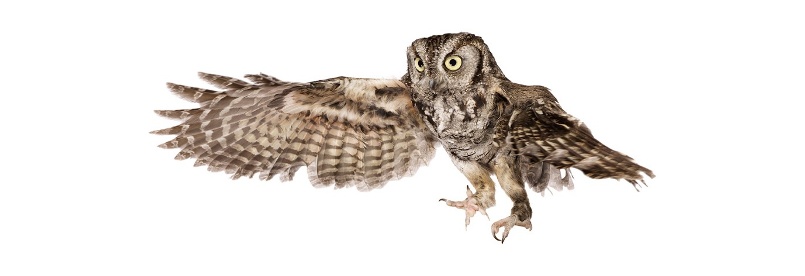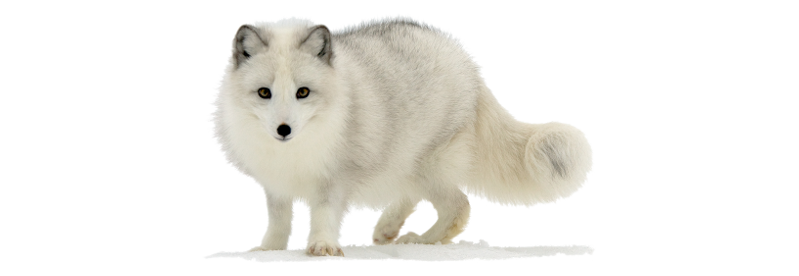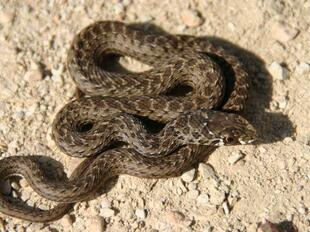
Corsac fox (Vulpes corsac)
Phylum —chordata
Class — mammalia
Order — carnivora
Family — canidae
Genus – vulpes
Appearance
The Corsac fox is a medium-sized fox, with a head and body length of 45 to 65 cm (18 to 26 in), and a tail 19 to 35 cm (7.5 to 13.8 in) long. Adults weigh from 1.6 to 3.2 kilograms (3.5 to 7.1 lb).
It has grey to yellowish fur over much of the body, with paler underparts and pale markings on the mouth, chin, and throat. During the winter, the coat becomes much thicker and silkier in texture, and is straw-grey in colour, with a darker line running down the back.
Habitat
Corsac foxes live in the central and northeast Asia. They are found throughout Kazakhstan, Uzbekistan, and Turkmenistan, and through all except the northernmost regions of Mongolia. In the south, their range extends into the more northern parts of Iran, Tajikistan, Kyrgyzstan, Afghanistan, and China, and they can also be found in neighboring regions of Russia.
Behavior
Corsac foxes are nocturnal and nomadic hunters of the steppes. They do not have a defended territory, and sometimes form packs. Because they cannot hunt in deep snow, they will either shelter in their dens during harsh weather or, in the northern parts of their range, they may migrate up to 600 km (370 mi) south in the winter. They sometimes follow herds of local antelope, relying on them to compress the snow as they pass. Their prey is often buried in caches.
Corsac foxes shelter in burrows from harsh weather and larger predators. Although they can dig their own dens, these are generally shallow, and they often take over the burrows of other animals. Dens may have several entrances but are usually less than 1 meter (3 ft 3 in) deep. The burrow is shared between the social packs, with several dens and connecting holes. Corsac foxes are excellent climbers, but are slow runners and could be caught easily by a dog. During hunting or when threatening rivals these foxes produce barks, and to use higher pitch yelps or chirps as alarm calls or social greetings.
Diet
Corsac foxes are omnivorous, mainly carnivorous animals. Their diet consists mainly of insects and small rodents, such as voles, gerbils, jerboas, hamsters, and ground squirrels. They may also eat larger prey, including hares and pikas, and will scavenge for carrion and human refuse. They do occasionally eat fruit and other vegetation, especially when animal prey is scarce. As an adaption to the arid climate in which they live, Corsac foxes need little water to survive, obtaining most of the moisture they need from their food.
Reproduction
Corsac foxes are monogamous and form pair bonds, however, before that males will initially fight for access to females. The breeding season starts in January and ends in March. The female creates a birthing den, which is sometimes shared with other pregnant females, but moves her young to new burrows several times after they are born. Typically, 2-6 kits are born after a gestation period of 52 to 60 days. Newborn kits weigh around 60 g (2.1 oz) and have fluffy, light brown fur that turns yellowish as they age. They are born blind and open their eyes at around 2 weeks of age. Both parents assist in the raising of their young. Kits begin to eat meat at 4 weeks and emerge from the den shortly after. Corsac foxes reach reproductive maturity within 9 to 10 months and reproduce in the second year of life.
They live up to 9 years in the wild.
In captivity
For one adult animal, a metal cage with a minimum volume of 100x120x150 cm is required. Inside, a wooden house is placed with the size of 80x80x55 cm. Daylight hours are 10-11 hours in summer and 8-9 hours in winter. Incandescent lamps are used for lighting. It is advisable to include periodicallysources of ultraviolet light that suppress pathogenic microflora and contribute to the formation of vitamin D in the animal body.
Pets are fed with lean meat and tripe. Hard beef and pork must be pre-ground and mixed with porridge, crushed grain or bran in a ratio of 4 to 1. Adults are fed once, nursing females - twice, and juveniles - three times a day. Mineral and vitamin supplements are added to the feed. The drinking bowl should have clean drinking water.
 Russian
Russian
 English
English
























